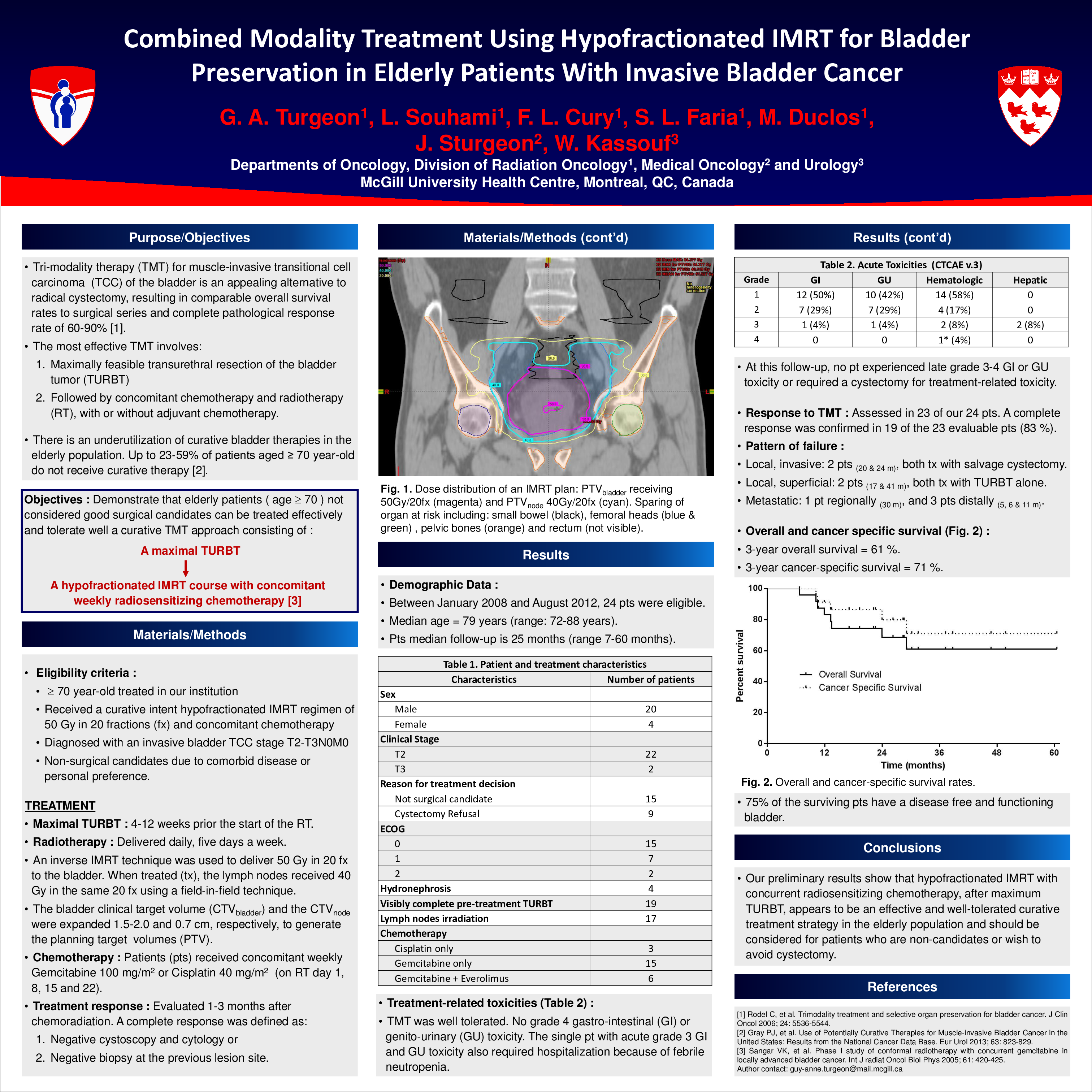Abstract
Purpose
Long-term results of bladder-preserving combined treatment modalities (CMT) for muscle invasive bladder cancer have confirmed that this approach is safe and effective in selected patients. Here we report our preliminary results of CMT for bladder preservation in elderly patients using hypofractionated IMRT.
Materials/Methods
A retrospective review was performed on a population aged ³70 years treated with maximally feasible TURBTfollowed by concomitant chemoradiation using hypofractionated IMRT. All patients were treated between January 2008 and August 2012. Eligibility criteria were: a proven diagnosis of muscle invasive transitional cell carcinoma stage T2-T3N0M0; to have received CMT with curative intent; and to have been planned for a course of hypofractionated IMRT regimen of 50Gy in 20 fractions (fx). IMRT was delivered to the bladder volume only in 7 patients (29%). The remaining 17 patients received 50Gy/20fx to the bladder and 40Gy/20fx to the pelvic lymph nodes. All patients received concomitant chemotherapy either with Gemcitabine 100 mg/m2 weekly (21 patients) or Cisplatin 40 mg/m2 weekly. Of the patients receiving weekly gemcitabine, six also received everolimus as part of an on-going phase I/II trial.
Results
Twenty-four patients with a median age of 79 years were eligible for our study. Nine patients refused cystectomy and the remaining 15 were not considered medically fit for cystectomy. TURBT was not possible or judged incomplete by the urologist in five patients. The median follow-up was 16 months (range: 6-55 months). A cystoscopically and/or biopsy proven complete response in the bladder was confirmed in 83% of the patients. Of the remaining patients, one of them underwent salvage cystectomy and no disease was found in the bladder on histopathological assessment. Seven patients recurred, four loco-regionally and three with distant metastasis. Disease-free, cause-specific and the overall survival rates at 2 years were 81%, 74% and 63%, respectively. Grade 2 acute genitourinary (GU) and/or gastrointestinal (GI) toxicities occurred in 42% of the patients. A single patient had febrile neutropenia with combined grade 3 GU and GI acute toxicities. Grade 3 hematologic and/or liver enzymes toxicity were seen in 17% of our cohort. There was no grade 4-5 toxicity.
Conclusions
In our preliminary results, CMT using hypofractionated IMRT appears to be an effective and generally well tolerated regimen for elderly, frail patients with muscle invasive bladder cancer undergoing bladder preservation strategy. Hypofractionated IMRT appears to be an attractive alternative option to conventionally fractionated radiotherapy in the elderly population.





